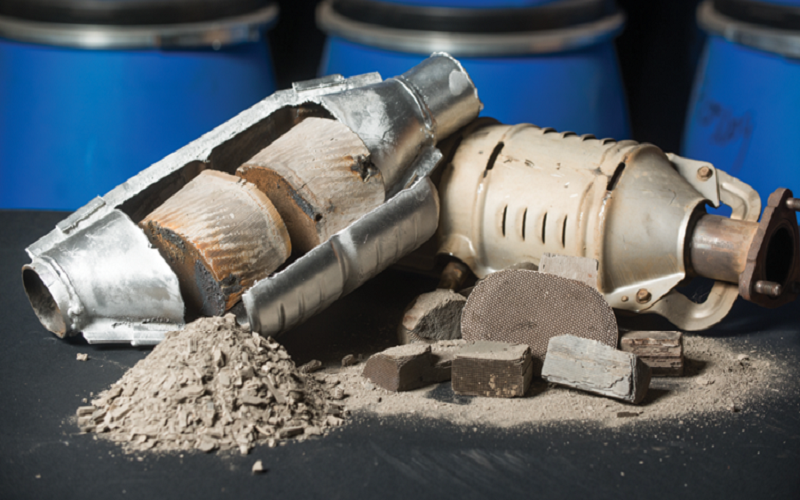Recycling catalytic converters is a crucial procedure in the automobile sector that promotes sustainability, resource preservation, and a decrease in emissions. As environmental consciousness and technological advancements rise, innovative approaches and new trends will shape the recycling of catalytic converters in the future. In this post, we will examine the developments and patterns influencing catalytic converter recycling in the future.

1. Cutting-Edge Recycling Methods
Technological developments in recycling are transforming the catalytic converter processing industry. Novel approaches, including hydrometallurgy, chemical leaching, and plasma processing, are being developed to increase metal recovery rates and lessen their negative environmental effects. By providing more economical and effective ways to remove valuable metals from scrap converters, these technologies open the door to more environmentally friendly recycling practices.
2. Robotics and Automation
Catalytic converter recycling plants are progressively integrating automation and robots to improve efficiency and optimise operations. Robotic dismantling equipment, AI-driven procedures, and automated sorting systems enhance metal recovery efficiency and accuracy. Automation is fostering innovation in the recycling sector by lowering the demand for manual effort and minimising human error.
3. Design of Catalytic Converters
Catalytic converter design is changing to make them more recyclable and less harmful to the environment. In an effort to simplify the disassembly and processing of converters, manufacturers are investigating novel materials and manufacturing techniques. Better separation of precious metals and waste reduction is made possible by more effective recycling, which is made possible by modular designs and standardised components.
4. Urban Mining
Urban mining is the process of extracting valuable commodities, such as technological trash and end-of-life cars, from the infrastructure that already exists in metropolitan areas. Urban mining relies heavily on the recycling of catalytic converters since it makes it possible to recover valuable metals from abandoned cars. Urban mining is playing a bigger and bigger role in the recycling business as urban populations rise and resource demands rise.
5. Initiatives for a Circular Economy
The transition to a circular economy is fueling initiatives to encourage material reuse and recycling, including catalytic converters. Closing the supply chain and lowering the requirement for fresh resources, manufacturers are progressively including recycled metals in new converters. Furthermore, manufacturers are being encouraged to assume accountability for the end-of-life management of their goods, including catalytic converters, through the implementation of extended producer responsibility (EPR) programmes.
6. Regulations about the Environment
Strict environmental requirements are driving investment and innovation in catalytic converter recycling. Globally, governments are enforcing recycling goals and emissions regulations in an effort to lower pollution and advance sustainability. Recycling facilities must use cleaner and more effective procedures to comply with these rules, which encourages the development of innovative technologies and procedures in the sector.
7. Collaboration and Joint Ventures
Innovation in catalytic converter recycling requires cooperation between parties involved in the automotive, recycling, and manufacturing sectors. Collaborations among automakers, recycling centres, and tech companies promote information exchange, research, and funding for environmentally friendly solutions. Stakeholders may overcome obstacles and quicken the shift to a more circular economy by cooperating.
Conclusion
Catalytic converter recycling is going to be characterised by innovation, sustainability, and teamwork in the future. The recycling sector is evolving due to factors such as collaborations, environmental restrictions, automation, design advancements, urban mining, circular economy efforts, and advanced recycling technology. The automobile sector can continue to lessen its environmental impact and build a more sustainable future for future generations by embracing these trends and investing in sustainable practices.





